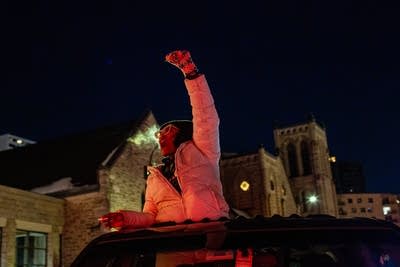Frey suspends no-knock warrant use following outcry over the killing of Amir Locke

Go Deeper.
Create an account or log in to save stories.
Like this?
Thanks for liking this story! We have added it to a list of your favorite stories.
Minneapolis Mayor Jacob Frey is halting the use of no-knock warrants in the city following the police killing of Amir Locke during an early morning raid this week at a downtown apartment.
While the city has not announced plans to review the shooting itself, Frey said the police department is working with national experts, Pete Kraska of Eastern Kentucky University and civil rights activist DeRay Mckesson, to suggest revisions to the MPD’s policy on unannounced entry while the moratorium is in place.
Both are credited with work on a Louisville, Kentucky, ordinance that banned no-knock warrants, after Breonna Taylor was shot and killed in a botched police raid on her apartment in that city.
Minneapolis police aren’t saying why they opted for a no-knock warrant the morning Locke, 22, was killed, but court documents indicate that a man who lived in the apartment that Locke was visiting had threatened police before.
Turn Up Your Support
MPR News helps you turn down the noise and build shared understanding. Turn up your support for this public resource and keep trusted journalism accessible to all.
Minneapolis police say a SWAT team was serving a search warrant at apartment 701 of the Bolero Flats on behalf of the St. Paul Police Department, as part of a homicide investigation by that department. But neither department has said what evidence the officers were after or to whom that evidence may have been connected.
St. Paul Police in statement Friday said the warrants are under seal and that “the agency responsible for serving the warrant determines what tactics that will be used.” No arrests have been made in the homicide case, and the SPPD did not say more about it.
On a video that authorities released Thursday, SWAT officers are seen inside a seventh floor hallway. They approach the apartment door in silence; one inserts a key and they burst inside.
In the police body camera footage, Amir Locke is visible under a blanket on a sofa. Locke has a gun in his hand. He doesn’t fire it. Officer Mark Hanneman shoots Locke three times before the clip ends.

Locke had no criminal record, and interim Police Chief Amelia Huffman on Thursday walked back a written statement that called him a “suspect.”
Police aren’t saying why they opted for a no-knock warrant, but court documents indicate that a man who lived in the apartment that Locke was visiting had a past violent confrontation with police.
Marlon Cornelius Speed, 23, who lives in apartment 701, pleaded guilty in 2019 to a misdemeanor charge of interfering with police. Prosecutors say while riding in a squad car, Speed threatened to rape an officer’s family members, then tried to head butt him after arriving at the jail. The criminal complaint says Speed then smashed the officer’s hand into a concrete pillar.
More recently, prosecutors charged Speed with felony domestic assault. In November, he allegedly hit his girlfriend with a belt and choked his sister, who’d tried to intervene, until she nearly passed out.
Susan Larson lived in apartment 702 and says she feared for her own safety so much that she left the building just a week ago.
Minneapolis police have not said why they chose to enter the targeted apartment without announcing and waiting first.
Criminologist David Klinger at the University of Missouri-St. Louis says fear of violence from the subject of a search may lead officers to opt for a no-knock warrant. The element of surprise can make the person think twice about grabbing a gun.
“The downside is that oftentimes people who are inside a location don’t know who it is that’s coming in, get confused. It takes awhile to get oriented when you are sound asleep, for example,” Klinger said.
Because of the risks to officers and civilians, many departments have moved away from using no-knock and knock-announce-and-enter methods to apprehend suspects and obtain evidence.
Klinger — who served as a police officer on the west coast in the early 1980s — is quick to point out that much about the killing is unknown. He says there needs to be an after action review that looks at the whole incident, not just Hanneman’s decision to shoot Locke.
Dear reader,
Political debates with family or friends can get heated. But what if there was a way to handle them better?
You can learn how to have civil political conversations with our new e-book!
Download our free e-book, Talking Sense: Have Hard Political Conversations, Better, and learn how to talk without the tension.






